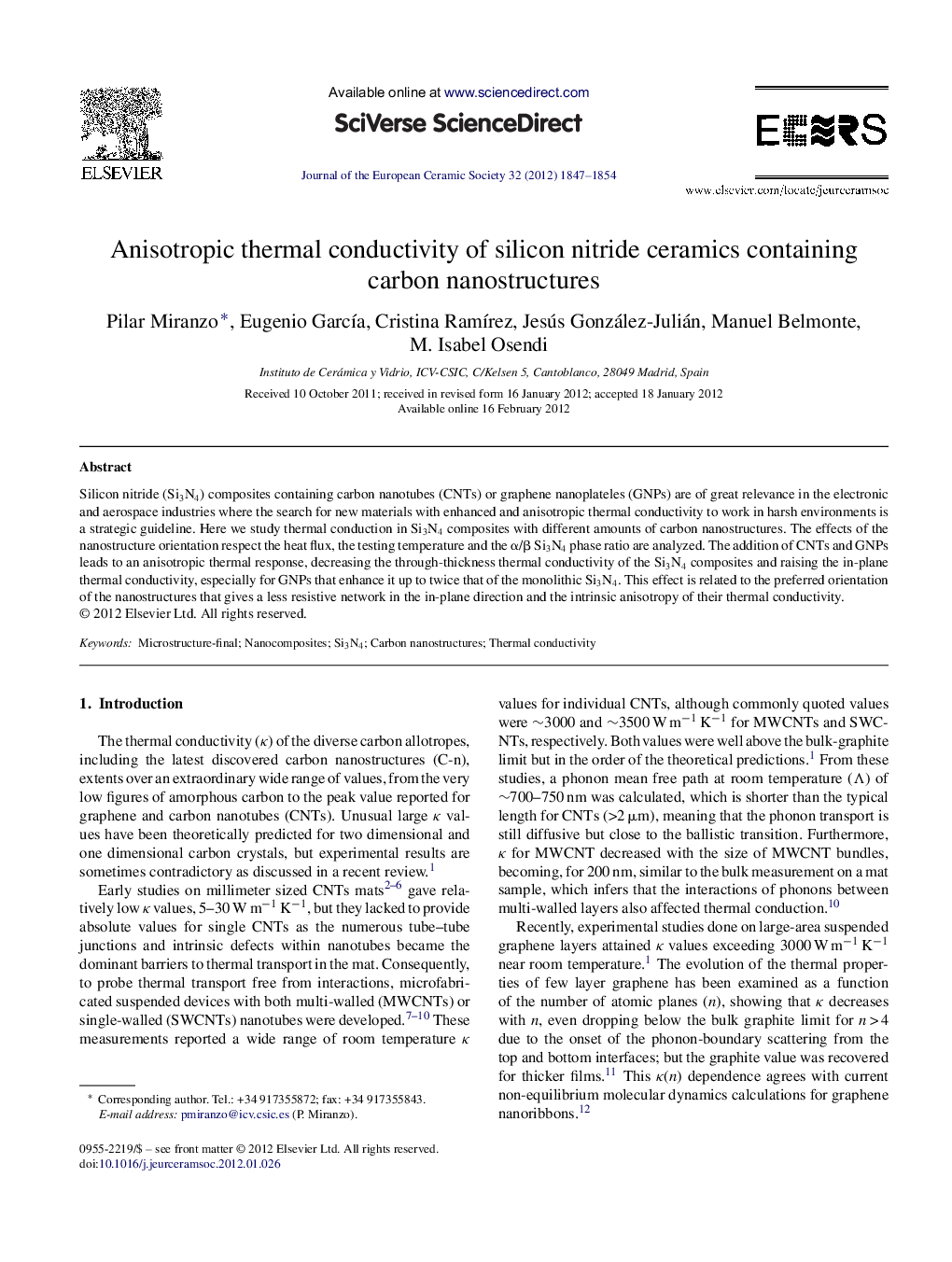| Article ID | Journal | Published Year | Pages | File Type |
|---|---|---|---|---|
| 1475483 | Journal of the European Ceramic Society | 2012 | 8 Pages |
Silicon nitride (Si3N4) composites containing carbon nanotubes (CNTs) or graphene nanoplateles (GNPs) are of great relevance in the electronic and aerospace industries where the search for new materials with enhanced and anisotropic thermal conductivity to work in harsh environments is a strategic guideline. Here we study thermal conduction in Si3N4 composites with different amounts of carbon nanostructures. The effects of the nanostructure orientation respect the heat flux, the testing temperature and the α/β Si3N4 phase ratio are analyzed. The addition of CNTs and GNPs leads to an anisotropic thermal response, decreasing the through-thickness thermal conductivity of the Si3N4 composites and raising the in-plane thermal conductivity, especially for GNPs that enhance it up to twice that of the monolithic Si3N4. This effect is related to the preferred orientation of the nanostructures that gives a less resistive network in the in-plane direction and the intrinsic anisotropy of their thermal conductivity.
